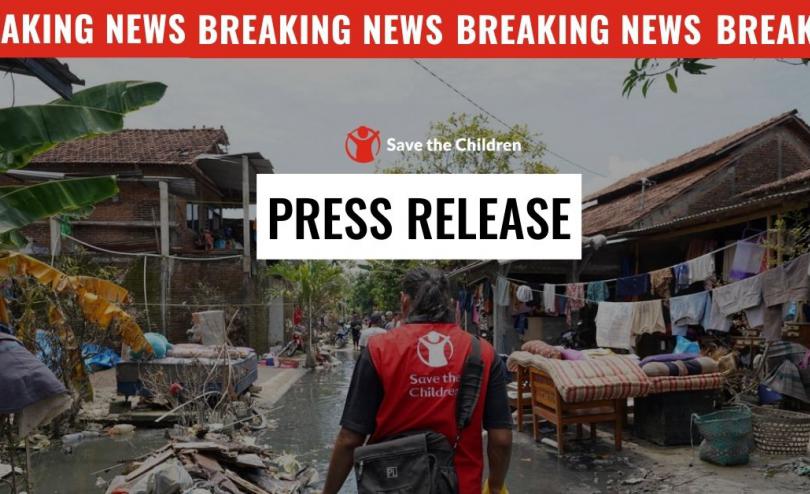VIETNAM: Back-to-school challenges ahead as flood-hit areas struggle to recover

The worst hit area was Son La province, known for its rice terraces and rolling hills, where ethnic minorities account for about 84% of the total population. About 1.3 million people were affected after landslides and floods brought about by a typhoon and torrential rain last month that damaged 29 schools[1], more than 2,670 homes, and killed at least 11 people.
About 4,500 children in the province now face safety challenges when they go back to school, which is due to start on 5 September.
Ha Cong Minh, the principal of a school in Mai Son district of Son La province, said:
“The road to school is very rough with landslides and broken bridges making it hard to travel. Children must cross streams to get to school and I worry about their safety. I hope to get funds to fix the landslides before the new school year starts, so the road can be cleared for motorbikes from the villages to the commune center and school.”
Vietnam is one of the world’s most vulnerable countries to climate change with women and children particularly at risk.[2] It is prone to flash and coastal flooding[3] and is also vulnerable to tropical cyclones.
Globally, many countries are set to see more frequent and intense floods as precipitation patterns change and glaciers melt. Children born in 2020 are poised to face 2.8 times more river floods, on average, than those born in 1960.[4]
However, Vietnam’s efforts to invest in climate change adaptation are encouraging and this year Vietnam was ranked 27 out of 67 countries by the Climate Change Performance Index (CCPI) 2024* – an independent tool which tracks the climate protection performance of 59 countries and the European Union.[5]
Le Thi Thanh Huong, Country Director of Save the Children Vietnam, said:
“The countdown is on for the start to the new school year in September but many children in Son La province are confronted with safety concerns when returning to school because facilities were badly damaged by the floods. The recovery will take many months and without immediate intervention, these children could face numerous dangers.”
“Save the Children in Vietnam prioritises disaster risk reduction and climate change adaption. Our interventions include reforestation, community knowledge-sharing and emergency relief to help mitigate the negative impact of climate change on children’s health, safety and on their education.”
Save the Children in Vietnam hopes to help about 1,200 families in Son La province – including those whose relatives were killed or injured in the floods and households with children under the age of 18. The organisation will provide cash support to about 600 families and share messages about hygiene and child safety and protection together with Son La’s Provincial Steering Committee for Disaster Prevention and Control, the provincial Red Cross Association and the People’s Committee of Mai Son and Thuan Chau districts.
Flood recovery is expected to take place over one year (from November 2024 to December 2025) and will cost an estimated US$450,000, including for health and education initiatives.
Save the Children works in 22 provinces in Vietnam in partnership with government agencies, civil society organizations, the private sector and academic institutions to deliver programs in the areas of education, health and nutrition, child protection, child rights governance, child poverty, disaster risk reduction and climate change adaptation.
ENDS
********************************
For further enquiries please contact:
Amy Lefevre, Global Media Manager (Asia):
Our media out of hours (BST) contact is media@savethechildren.org.uk
For more news visit: www.savethechildren.net




